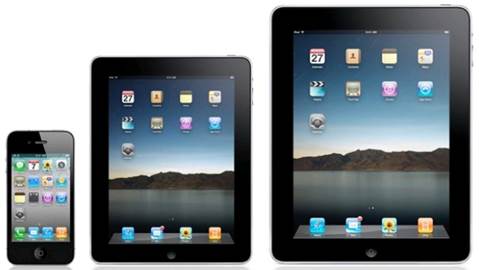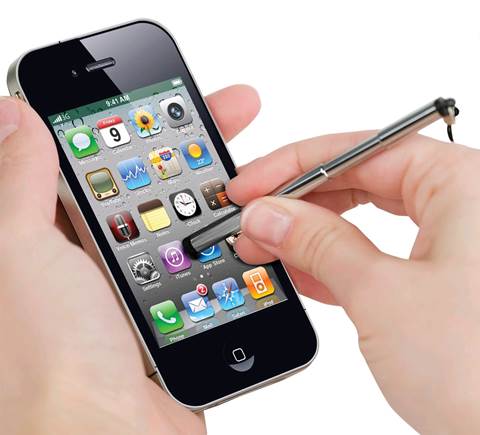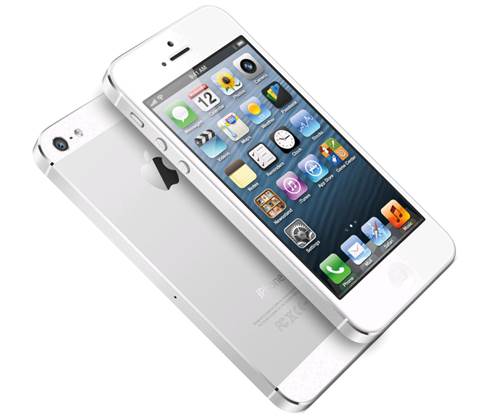Interactivity is emerging as a key
differentiating factor in the display world, and so are other aspects such as
greenness, flexibility, performance, energy consumption and heat dissipation. Sitting
in the background, powerful chips and software code are working magic to
achieve these and other targets.

With
pinches and tickles, new touch-enabled display technologies are making devices
more personal than ever before
The most conspicuously visible aspect that
excites most customers about today's electronics products is the display. Be
it a new cell phone, tablet, television or laptop, the first thing that people
look at is how bright and clear the display is. Understandably, the displays are
fast evolving. Even as older screens are giving way to high-definition (HD)
ones, quad HD and ultra HD are already on their way. Whether you are a fan of
liquid-crystal displays (LCDs), light-emitting diode (LED) displays or Plasma
screens, there is some improvement happening every day in their performance or
clarity.

A
sample of Plasma screen
That said, the current generation of
mobile users has triggered a fresh set of parameters for evaluating displays,
and a brand new set of challenges for display makers and researchers.
Interactivity has emerged as a key requirement, giving rise to improved touch
screens and immersive technologies. The need to conserve battery life has made
engineers focus their energy on reducing the power consumed by displays.
As devices are getting packed into smaller
footprints, there is also a need to make cooler displays that do not affect the
performance of surrounding components. People spending a lot of time outdoors
love to watch movies or play games on their mobile gadgets in their free time.
This is enforcing the need for higher display performance even in smaller
screens.
Likewise, the need to use mobile phones in
rugged outdoor environments is pushing manufacturers to come up with displays
that show clear images even in bright daylight, robust and flexible displays
that are not damaged by a fall, and so on. On top of this, there is the
much-hyped 3D trend!
It takes a multi-disciplinary approach to
solve these problems and create a perfect experience for the users. Materials
sciences, nanotechnology, chemical engineering, physics, electronics,
integrated circuit (IC) design and software development are all waltzing
together to create the super displays we see today. Much of the magic is, in
fact, done by the powerful little chips and code that work in the background.
Here is a quick round-up of some interesting display-related developments in
the year gone by.
Lighter and brighter touch screens -
Apple style
Since people spend a lot of time using
technology, they like their devices to be more interactive, with more natural
forms of engagement. Some like to give voice inputs, while others like
gestures. This demand for interactivity is greatly influencing the touch
features of displays.

Apple-style
touch-screen device
It is not surprising then that Apple
adopted in-cell touch sensing in iPhone 5 despite knowing that it would raise
the cost of the phone significantly. A normal capacitive touch screen uses a
layer of glass on top and a layer of indium tin-oxide (ITO) underneath it. ITO
is transparent and electrically-conductive. When a finger is brought near it,
it acts like a capacitor - the capacitive change is detected by the circuitry
in the phone, and the finger's position tracked. Below the ITO layer is another
layer of glass, which has a second layer of ITO on it to isolate the LCD screen
from electrical noise. So, actually the image has to go through two layers of
glass and ITO. Even if you assume the best-quality glass and minimal
refraction, some amount of clarity is lost. Plus, having multiple layers also
increases the weight.

It
is not surprising then that Apple adopted in-cell touch sensing in iPhone 5
despite knowing that it would raise the cost of the phone significantly.
In-cell multi-touch technology tries to
overcome these problems by combining the LCD and touch sensing layers. It
integrates touch into the thin-film transistor (TFT) LCD manufacturing process,
obviating the need for additional sensors and glass.
Apple appears to have been thinking about
this since as early as 2006, when it filed a provisional patent for methods of
including touch capabilities in displays. In August this year, they were
granted a patent for an extensive application that covered several ideas as
well as manufacturing processes that could be used to build the displays. The
abstract mentions that there are several forms in which the touch sensing
elements may be integrated with the display circuitry: "Touch sensing
elements can be completely implemented within the LCD stack up but outside and
not between the color filter plate and the array plate. Alternatively, some
touch sensing elements can be between the color filter and array plates with
other touch sensing elements not between the plates."
Japan Display recently showcased three
prototype displays in collaboration with Sony, Toshiba and Hitachi. Hyped as
'Innovation Vehicles,' these displays represent the technologies that will be
incorporated into products in the recent future. One of the innovative
features of these prototypes is the Pixel Eyes technology, which is comparable
to in-cell sensing.
According to the company's announcement at
FPD International 2012, "In Pixel Eyes technology, the touch-panel is
built in, rather than being attached from outside. The structure becomes
simple, so it's easy to make the display thin. Such a thin display is very
sensitive, so we've utilized that to enable writing with a pen. Currently,
finger operation is the norm, but we would like to provide a pen-drawing
solution next."
A screen that can bulge into buttons
We like to swipe and pinch our screens, but
there are still times when we wish for a traditional keyboard experience - say,
when typing a long document.
Californian company Tactus Technology
together with Touch Revolution seems to have an answer. Their new touch panel
looks like the normal touch screen displays on existing handheld gadgets but it
uses a tactile layer that sits atop the touch screen. This tactile layer is
composed of fluid-filled micro-channels, which can alter fluid pressure and
redirect the liquid to create blister-like buttons. Similarly, it can also
make the buttons disappear in a jiffy.
This morphing technology can be used to
give users a keyboard on-demand experience, by transforming a touch screen's
flat surface into real physical buttons. While in the initial stages the
company has preprogrammed the size and shape of the buttons, in the future it
will be possible for the user to configure these too. The tactile layer
consumes very little power while forming the buttons, but there is no power
consumption once the buttons are active.
This technology is expected to be used in
products starting 2013.